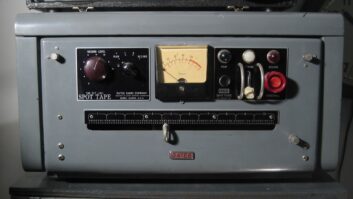A busy news day for Bonneville and radio in Washington, D.C.
The company held a morning press conference to announce several changes it said will “better serve the news, information and music interests of radio listeners in the Washington, D.C. community.”
Its WTOP news format moves from its long-time AM slot at 1500 kHz to 103.5 on the FM dial, which had been home to Bonneville’s classical station WGMS. This move, the company says, gives the big news station better reach and penetration. Bonneville officials believe WTOP, which is a ratings powerhouse in the information-hungry market but is carried on various frequencies in an attempt to blanket the market, will be heard better on 103.5.
Two of the frequencies now occupied by WTOP programming – 1500 kHz and 107.7 MHz — will become “Washington Post Radio.” Bonneville said it invited that newspaper to provide content for the new station. “The collaboration will mark the first time that these two leading providers of news and information in Washington, D.C. will work together on a major initiative.”
That programming launches in March and will include Post news and commentary provided by Post staff. “Bonneville will also pursue play-by-play sports for evening and weekend broadcasts on Washington Post Radio,” it stated. Bonneville will own and operate the station.
The classical format of WGMS doesn’t go away; it supplants a “Z104” modern music format that the company had been airing on 104.1 and, in nearby Frederick, Md., on 103.9.
The company also said it has launched two new multicast classical stations, one that will play traditional classical in more depth, the other an on-air version of its current Web-based opera and choral music station, Viva La Voce.
The WGMS move to 104.1/103.9 FM is immediate. Until the launch of Washington Post Radio, WTOP will be simulcast on 103.5 FM and 1500 AM and 107.7 FM. The station is also heard on 820 AM.
Bonneville Moves WTOP Format; Adds Washington Post Radio and Classical Multicasts
Bonneville Moves WTOP Format; Adds Washington Post Radio and Classical Multicasts







